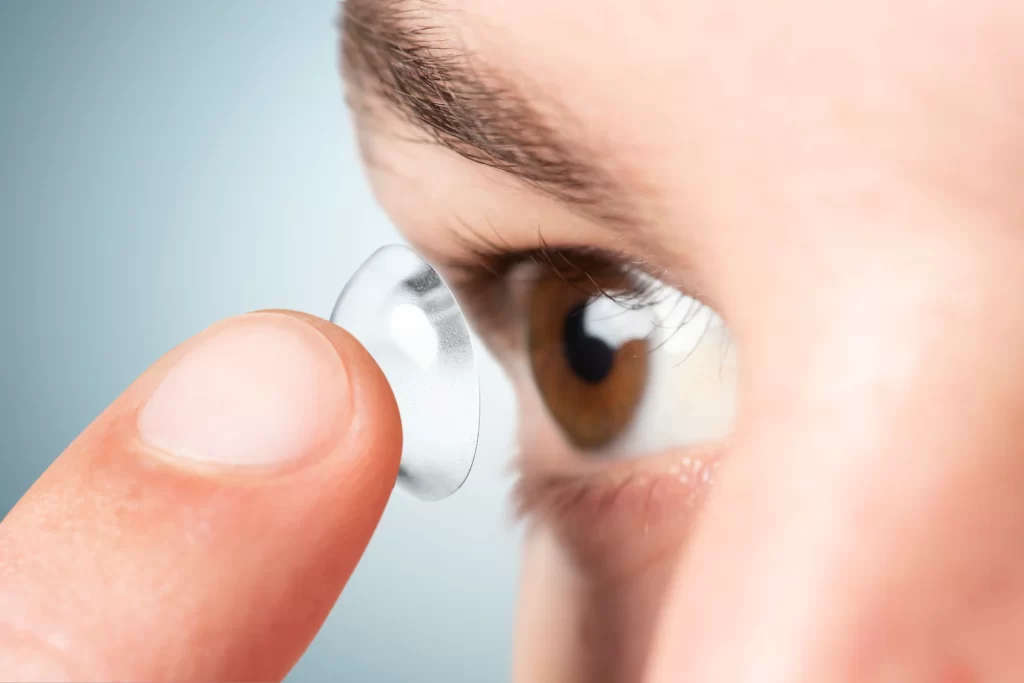
When it comes to contact lenses, there is no such thing as a universal size. If your contact lenses do not fit correctly, you may have discomfort, blurred vision, and even permanent damage to your eyes.
Your eye doctor will take certain measurements of your cornea, pupil, and iris so that your contact lenses will properly conform to the particular contours of your eyes. This will guarantee that your lenses are comfortable and effective.

A tool known as a keratometer will be used to measure the curvature of your cornea, which is the transparent front covering of your eye, in order to establish the curve that should be used for your contact lenses.
If you suffer from astigmatism, your cornea will have a flatter corneal curve than normal, which might make it challenging for you to wear conventional contact lenses. Instead, your eye doctor may suggest that you get a lens called a toric lens, which is made to fit more securely on an eye that has astigmatism.
In order to obtain more precise measurements of the corneal surface, a corneal topography is occasionally carried out.

Your pupil and iris, which is the colored component of your eye, will be measured with a biomicroscope or slit lamp, or in certain situations, with a ruler or card. This will determine the size of both of these parts of your eye.
If you are thinking about getting gas permeable (GP) contact lenses, this measurement is extremely crucial for you to take.
Your eye doctor will thus examine your tear film to determine whether or not you are producing a enough amount of tears to ensure that your contact lenses remain moist and comfortable throughout the day.
During this portion of the examination, your eye doctor will place a drop of liquid dye on your eye, examine your tears using a slit lamp, and then either place a special strip of paper underneath your eyelid to determine the amount of moisture that is absorbed, or place a drop of liquid dye on your eye.
If your tear film is weak, your eye doctor may suggest a certain type of contact lens that is specially developed to assist maintain eye moisture and hydration. This lens can be worn by people who already have dry eyes.
After completing all of the necessary measures, your eye doctor may provide you with a sample pair of contact lenses for you to try on. They might put them in your eyes themselves, or they might demonstrate how to do it yourself. Your eye doctor will wait around 20 minutes after inserting the lenses into your eyes to evaluate how well they fit and how well you can see while wearing them. It's possible that it will take you a few different pairs of lenses before you locate the ones that work best for you.
After that, your eye doctor will place an order for your new contact lenses and then provide you with in-depth instructions on how to handle and care for your contacts in order to maintain their cleanliness and ensure that they are safe for your eyes.
When you first start using contact lenses, you could have some anxiety when it comes to putting them in and taking them out of your eyes. You might take comfort in the old adage that “practice makes perfect.” You’ll be an expert in only a few short days’ time.
After you have worn your trial lenses for around a week, your eye doctor will want to examine how well your eyes are responding to the new lenses that you have been prescribed.
Do not wait until your follow-up appointment to get your eyes inspected if you are experiencing any discomfort or dryness in your eyes. An eye exam should be performed as soon as possible. Your eye doctor may decide to try a different type of lens, suggest a different brand of contact lens solution, or alter the timetable at which you should wear your contact lenses.
Orthokeratology (CRT & VST) Orthokeratology, sometimes known as “ortho-k,” is the procedure of reshaping the eye using hard gas permeable contact lenses that have been specifically created for this purpose. The purpose of ortho-k is to treat mild to moderate degrees of nearsightedness and astigmatism by using a technique that flattens the front surface of the eye. This procedure is also known as “ortho-k.”
It is not necessary for certain difficulties, such as astigmatism, presbyopia, keratoconus, or dry eyes, to prevent a person from using contact lenses; nevertheless, these difficulties do demand additional time and perseverance.